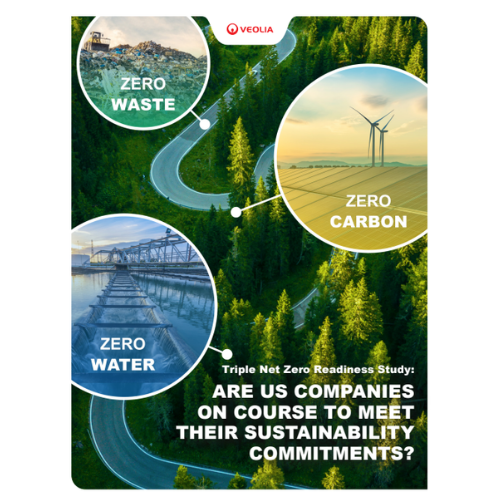By Patrick Schultz
What do the semiconductor, food and beverage, petrochemical, and power generation industries have in common? They all rely on water to produce - an increasingly scarce resource.
Water is a vital resource for America's essential industries, yet it’s often taken for granted. A 2023 study found fewer than 30% of surveyed companies have water conservation goals in place. At many U.S. companies, water conservation lags carbon and waste reduction on the priority list. This is concerning, considering the immediate, acute impact that water scarcity can have on manufacturing operations.
However, companies adopting water reuse and recycling can not only improve their operational performance but also mitigate climate and drought risks and make progress towards their sustainability goals. With advances in technology making water reuse more economically feasible, we need policy support to encourage adoption on a national scale. It’s time for industry to embrace water reuse and recycling.
Although nearly 70% of the planet is covered by water, only 2.5% is freshwater, and only 1% is accessible. In the U.S., industrial water use is second only to agriculture, yet current industrial water reuse offsets only a fraction of these withdrawals. By utilizing recycled water to meet production, manufacturing, and operational needs, businesses can advance their sustainability goals, reduce costs, and help communities protect critical water resources.
The benefits of industrial water reuse are clear, both in the short and long term. In the short term, facilities that invest in water reuse processes improve their operational flexibility, reduce water procurement costs, and increase capacity without straining local resources. In the long term, water reuse can reduce or mitigate the risks associated with seasonal droughts, increased demand in water-scarce areas, and even the impacts of climate change.
While the majority of companies have yet to seriously adopt net-zero water goals or aggressive reuse plans, there are some bright spots. The most advanced companies have found that water reuse projects can reduce an operation's environmental footprint and energy consumption, and even contribute to decarbonization. For example, innovative wastewater-to-energy projects can now remove organics from wastewater and convert them into a source of renewable low-carbon energy while returning recycled water to processes. Other companies have discovered that treated water can be reintroduced to the environment by replenishing depleted aquifers in water-scarce areas.
Once a company sets water consumption and reuse goals, the question becomes: how do they get started? A comprehensive environmental and process assessment is likely necessary to identify water conservation opportunities, prioritizing the lowest-cost initiatives and gradually working towards more capital-intensive system-level improvements. Surprisingly, significant progress can often be made with low or no capital investment using digital tools and implementing best practices. The most effective systems go beyond facility fencelines by working with other industrial and municipal entities in their communities to identify new water sources like municipal effluent that can be reused in industrial processes.
Undertaking a major water conservation program comes with challenges, with some of the most common barriers including program governance and change management, measurement and data gathering, and building attractive business cases for required investment. These challenges are real, which is why many companies opt to work alongside an experienced technology and O&M provider with a strong track record of implementing these kinds of projects, as well as utilizing digital tools to measure progress. Innovative sources of funding are increasingly available for environmental projects through partnerships, alternative investors, and water-as-a-service contracting — for instance, the WateReuse Association recently proposed a federal tax credit for water reuse projects. If approved, this measure would provide new financial incentives for organizations.
In a world where water scarcity is only increasing, firms that rely on water as a critical input must act urgently to reduce their operational risk, ensure a predictable supply and cost of water, and implement water reuse and recycling programs to minimize their environmental impact. Fellow industry leaders must prioritize water stewardship as an equal priority to carbon and waste reduction. Moving forward, it is critical that Congress adopt a water reuse tax credit as a mechanism to incentivize private investment in industrial water reuse and recycling.
Water is the lifeblood of America's essential industries, and the time to protect this precious resource through recycling and reuse is now.
Patrick Schultz is the President and CEO of Veolia’s Sustainable Industries and Buildings business, which helps industrial and commercial customers operate more reliably while reducing their environmental footprint.
This article originally appeared in Water Online.


